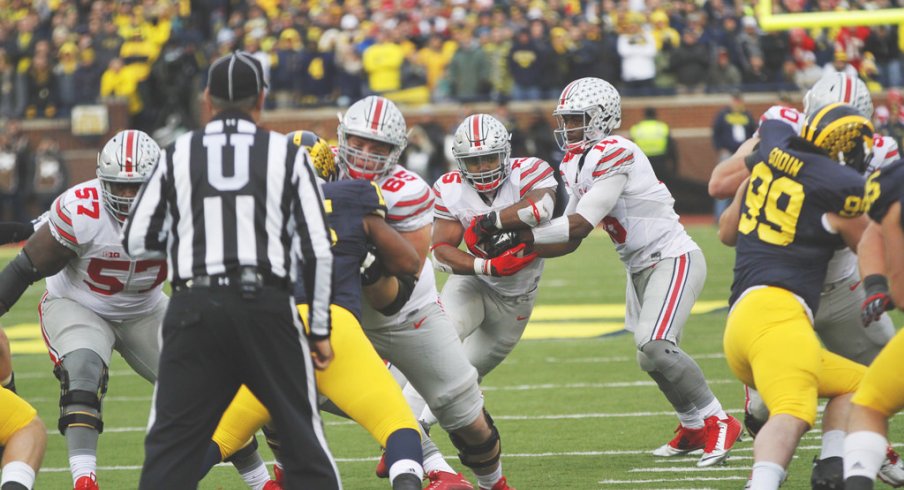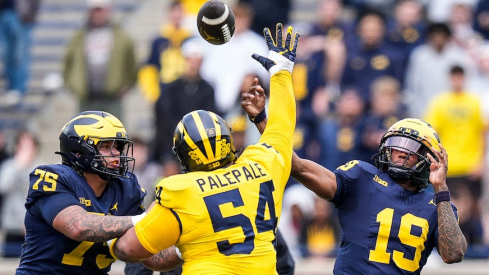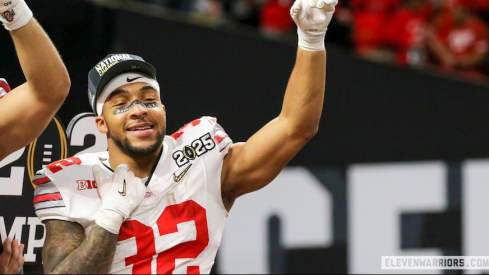What was once old is new again, at least in Ohio State's offensive playbook.
Though head coach Urban Meyer is known as an innovator of the 'Power Spread' offense that has become the norm in college football over the past decade, his team failed to live up to that reputation against Michigan State one week ago. Yet when facing the highly-touted defense of their biggest rivals in Ann Arbor just seven days later, the Buckeyes looked like those classic Meyer units, running at will before attacking downfield with the pass.
While Ezekiel Elliott saw a season-high 30 carries that led to 214 rushing yards in the win over Michigan, he could've easily had more of both. He also could've had quite a few less as well, yet through no fault of the much-maligned coaching staff. The Buckeyes attacked the aggressive, pro-style defense of Jim Harbaugh and heralded coordinator D.J. Durkin with countless option plays that let Wolverine defenders play themselves out of position over and over.
The fact that the Buckeyes used option tactics alone isn't anything new, but the concept that ate up their biggest rival hadn't been seen in Columbus much, if at all, this fall. Instead of just attacking with zone-read principles that are the foundation of Meyer's base scheme, OSU used an option attack built on gap-blocking.
After seeing the Wolverines line up in an 'odd' front on the game's opening possession, the Buckeyes countered with some of the same calls they'd leaned on early in the season when faced with similar looks. But with eight Michigan defenders regularly in the box in their regular one-high-safety look, regular OSU gap schemes like 'Power' left the Buckeyes with only seven blockers.
Given new life on their second drive thanks to a roughing call on punter Cameron Johnston, Meyer and offensive coordinator Ed Warinner didn't wait to go at the Wolverine defense with a wrinkle they may not have expected. On 2nd-and-10 from their own 24-yard line, Ezekiel Elliott broke off a big run to the outside.
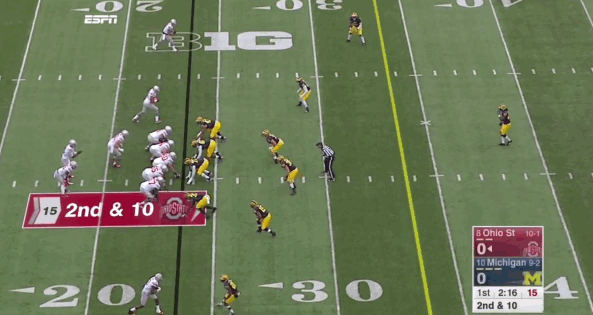
The 'Inverted-Veer' was first seen in the late 2000s in Clemson, TCU, and even Meyer's Florida backfields, but reached its tipping point as the marquee scheme of Cam Newton's remarkable season at Auburn in 2011. The name comes from the old 'veer' option offense run by the University of Houston in the 1960's that influenced the wishbone and I-formation option attacks which dominated the game for the next two decades.
However most coaches today refer to it as 'Power-read' as the concept is more an extension of the basic 'Power' play, which includes a pulling guard, than a triple-option like the veer. However instead of leading the running back through the hole, the guard is kicking out the end man on the line of scrimmage, creating a seam for the quarterback to run inside should he not hand off to the back on an outside sweep.
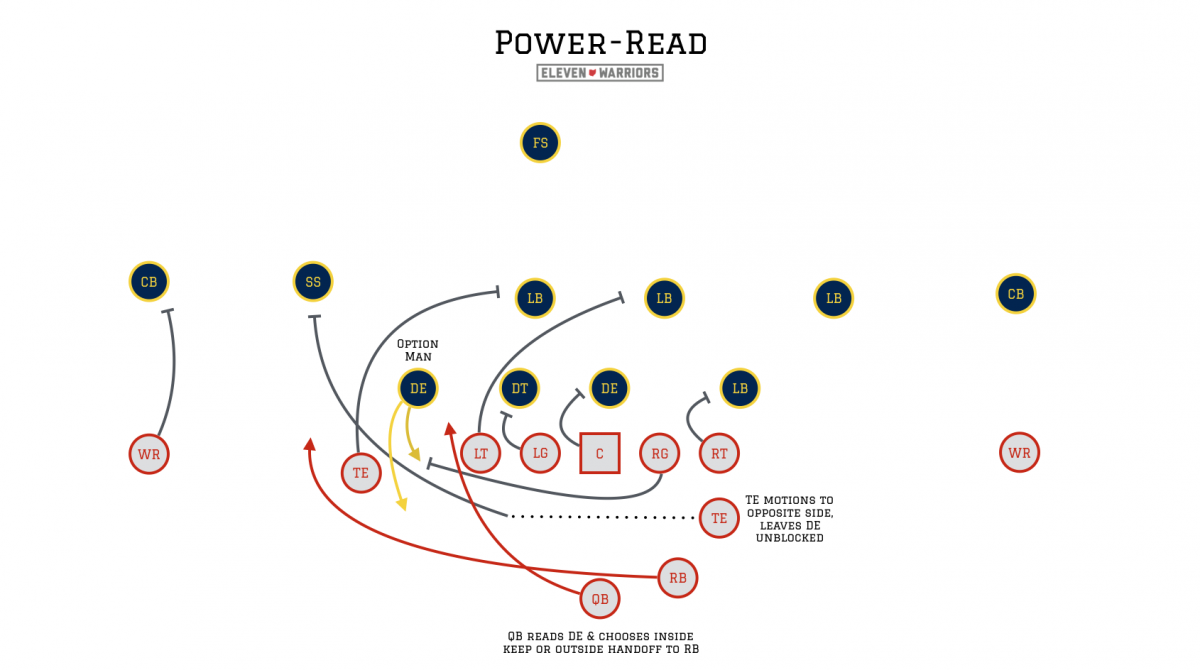
The key to the play is the quarterback's read of the end man on the line of scrimmage, who is left unblocked by both the tackle and tight end who instead look for linebackers inside to wall off. If the defensive end reads the handoff and follows the back to the outside, then the quarterback keeps and heads straight upfield.
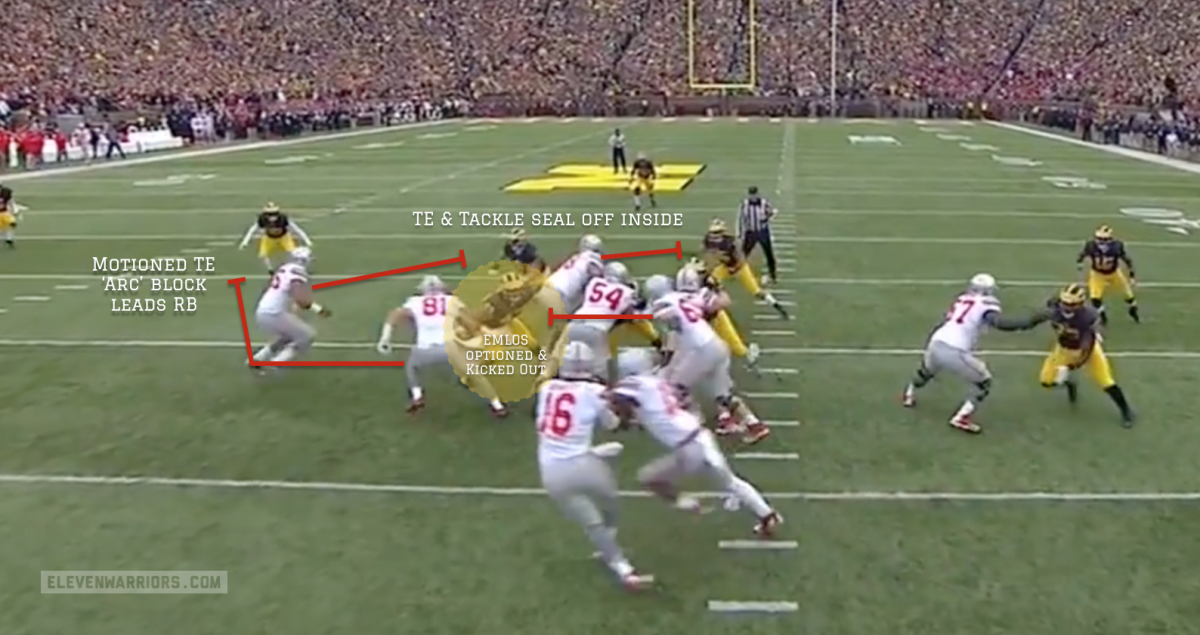
If the end keeps his eyes on the quarterback, then the read is to hand the ball off. Since Michigan end Chris Wormley (#43) hesitates just long enough to see what Barrett will do, the right decision is to give to Elliott who runs right past the defensive lineman.

Though the sight of #15 in white streaking down the left sideline for a long gain may remind you of the Sugar Bowl against Alabama, this concept was different than the pin-and-pull crack sweep that sprung Elliott for that famous run. However, the 'Power-read' hadn't been seen much this fall after also playing a big role in that big win over the Crimson Tide.
With the massive Cardale Jones lining up at Quarterback that night, the Buckeyes used the Power-read to let him pick up big yards inside against a aggressive defense that also regularly featured an odd front and single deep safety.

Perhaps Meyer was worried about subjecting the smaller Barrett to the wear and tear of running between the tackles like this, but for whatever reason the scheme was rarely called until the regular season finale. Yet after breaking a big gain with Elliott, the coaching staff would call the same exact play just two snaps later.
This time though, the option man (linebacker James Ross, #15) goes right after Elliott on the potential handoff, allowing Barrett to get upfield with only one man between him and the goal line.
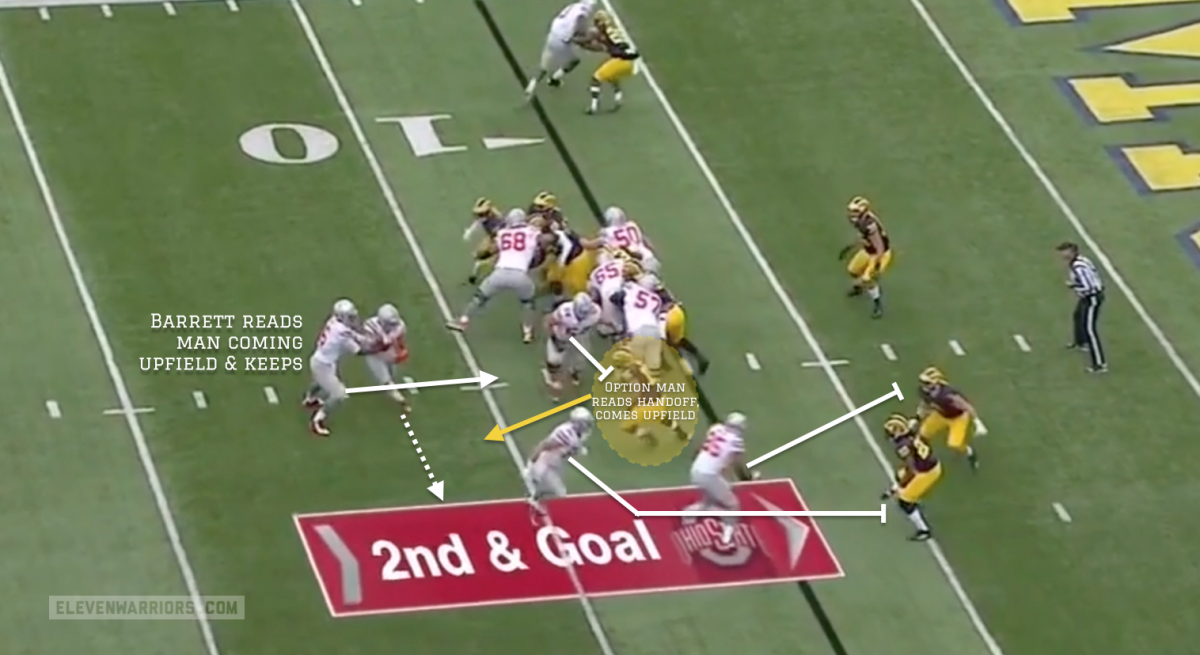
Even though that defender is Michigan's leading tackler, Joe Bolden, the Buckeyes have the edge in this open-field battle. Barrett simply side-steps the linebacker's bad angle and drives into the end zone.

But the Buckeyes were far from done with this concept. Though they wouldn't pick up any more 60-yard runs from the play, the play would let Barrett, Elliott, Curtis Samuel, and even Braxton Miller pick up yards on the ground when called.
Most importantly though, it allowed Meyer, Warinner, and the OSU offense push the throttle all the way down on the first drive of the second half. After methodically driving down to Michigan's 25-yard line in seven plays, the Buckeyes would use the threat of the Power-read to set up play-action.
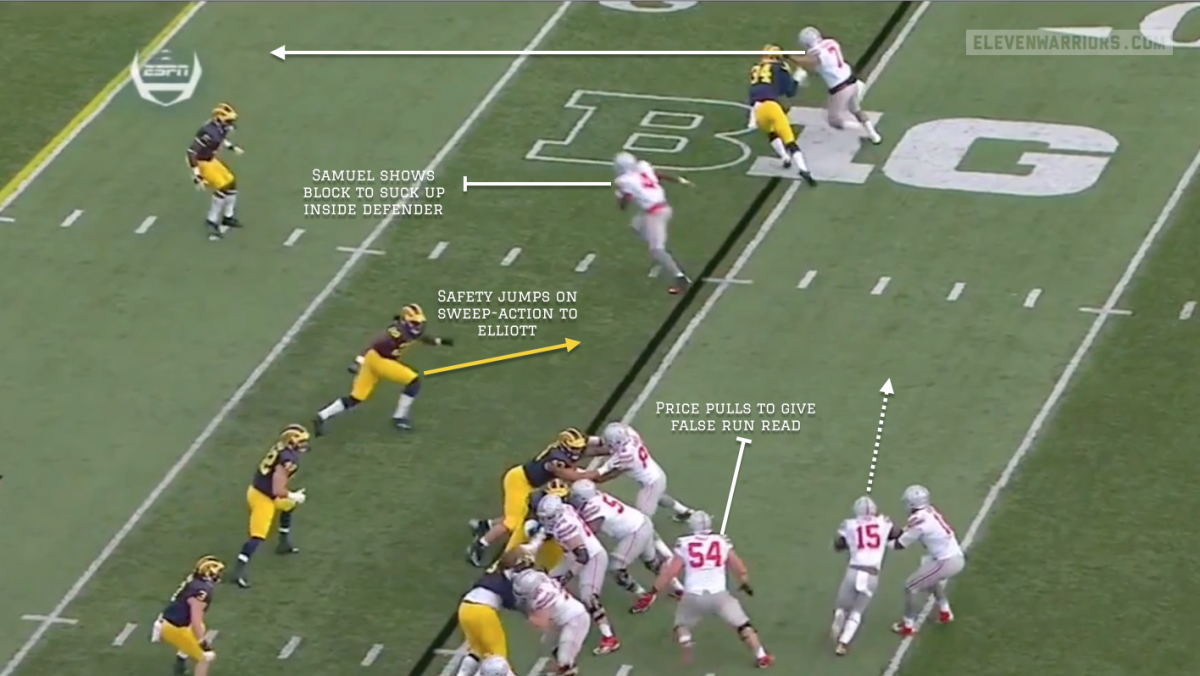
The Buckeyes send Elliott on a fake with left guard Billy Price pulling across the formation just as he would to set up the run. The Wolverines took the bait, as free safety Jarrod Wilson (#22) flew upfield to provide an extra defender at the point of attack.
Meyer and Warinner made the right bet, as the remaining Michigan defensive backs have their eyes on the the receiver in front of them, which is exactly what OSU wanted. Samuel, lined up in the slot, sets up five yards downfield as if he is about to block someone as well, sucking Jabrill Peppers (#5) back to the line of scrimmage on a run key.
That leaves Jalin Marshall one-on-one against cornerback Jeremy Clark, another matchup in which OSU has an athletic edge. After gaining an outside release, Marshall has a step on the defender on Clark as they head toward the end zone.

Barrett makes a great throw and Marshall an even better catch, but it never would've happened had the defense not bit on the threat of the power-read at the line of scrimmage. Safety Delano Hill was late to get over to help since he too initially read run, meaning Clark was all alone in coverage downfield.
The OSU offense put together its most impressive game of the season not because they had waited all year to pull this concept out of the playbook, but because of the way they called it. Yes, it forced Michigan's ends into uncomfortable situations for which they weren't prepared, but it was balanced by other runs from the same formation and later, the threat of the pass.
The Buckeyes' play-calling for much of the year felt disjointed because it often lacked this layered approach, instead forcing the ball to specific players instead of letting the offense naturally open up opportunities to get play-makers like Marshall and Elliott the ball. Though it remains to be seen who will get the next opportunity to face the Ohio State offense, one thing is for sure: if the Buckeyes are able to replicate this kind of game plan, that defense is in for a long day. Just ask Jim Harbaugh.
